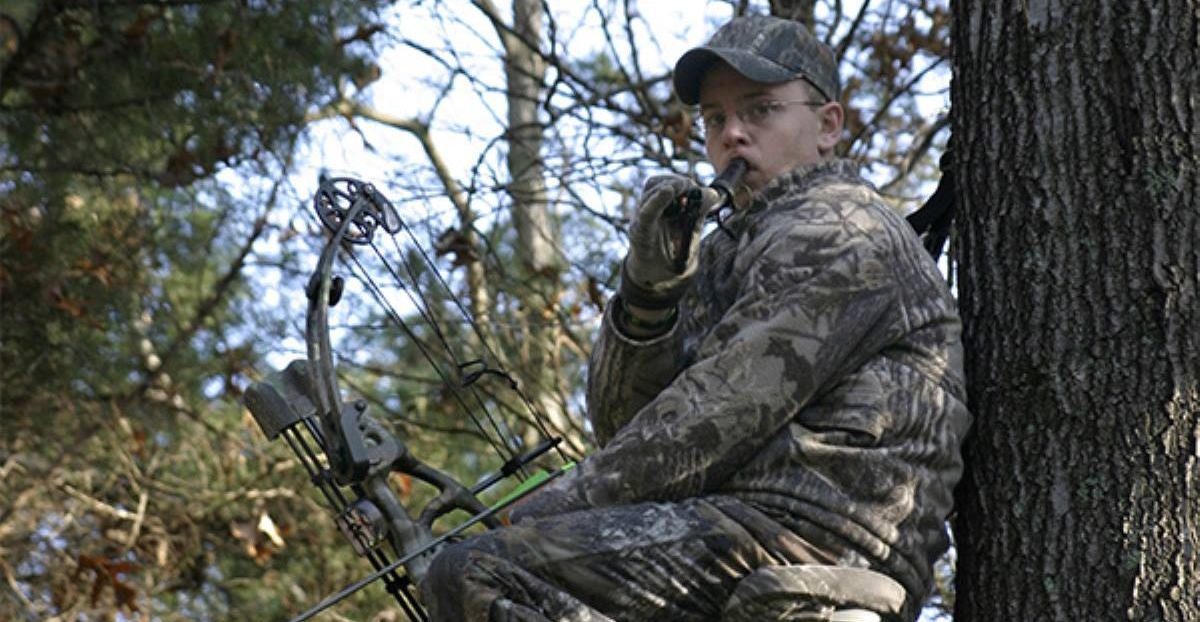The Art of Persuasion: Deer Scents, Rattles, and Bleats

The Art of Persuasion: Deer Scents, Rattles, and Bleats
In the 80’s, my father and grandfather were “entry-level” deer hunters. They had been invited to begin hunting a timber here in central Iowa that had a steady population of deer. In their efforts to learn more regarding the tactics to use to fool a wise old whitetail, my grandfather and father would douse their boots with fox urine! It was an effort to hide human scent when they were in the woods. It goes without saying that those boots were not allowed in the house, ever!
There is no doubt that in the last 40 years, there has been quite a bit of advancement when it comes to hunting whitetails. Knowing more about deer behavior, hunting scents, better tree stands, better bows, guns, and so much more.
I fear that somebody desiring to get into hunting in the current culture could be a bit overwhelmed with all the information and tools that are out there on the market. We must remember that man has been chasing deer for thousands of years. The art of hunting is not new. It’s the methods that are ever-changing.
What I’d like to accomplish in this article would be to share a bit of experience and knowledge with you, the reader, when it comes to the fall and how you can use some of these things that are out there. I’d like to share not only how to use them, but when to use them. Hopefully, something in this article might intrigue you and help you in the season to come!
Calling
Let’s start with calls. There are two effective “angles” of calling that you should consider during the deer hunting seasons here in Iowa. Now, as we discuss some of these, you must know that certain calls are more effective at certain times of the fall and winter. I would take that a step further and say that these methods of calling are MOST effective during the fall breeding season called the “Rut”. This is roughly a 2-3 week period in November when both bucks and does in the timber have one thing on their mind: breeding.
Two calls that hit the market in the early 90s were the grunt call and the bleat call. The grunt call mimics a sound that a buck will often make when he is looking or has found a doe who is in heat. The bleat is a rarer sound that does will make when being pursued or looking to locate other deer. Let’s start with the grunt.
The grunt call is one of the most notable sounds in the woods. It’s pretty neat when you hear it, and you’ll never forget it. Bucks, young and old, will vocally express themselves, especially when the rut hits. The very low, bellowing sound seems to penetrate the woods no matter what the situation may be. Bucks use their grunt when they are on the search, when they have found a doe ready to mate, and even in moments of frustration or anger. The sound ranges from something low-key and quiet to something that resembles a roar. Often, when you’re in a tree stand, you might hear the grunt before you see the buck.
The most effective time to use a grunt call is during the rut. When a hunter uses the sound properly, they are creating a situation of challenge. Bucks are very territorial, and when they hear another in their area, they are quick to decide that this foreigner needs to go! When a buck hears a hunter’s grunt call, there is a high percentage of chance that the buck will ignore whatever he’s doing at the moment to find the “buck” it’s hearing and challenge it. It is best used to bring a passing buck into the bow range or shooting range. For me, it is one of my most effective calls to have in my pocket.
A bleat call mimics the sound of a doe who might be in the area. The bleat sound is very different than a grunt. It sounds like a very off-key trumpet being blown gently until the trumpet player runs out of breath. Mature does often bleat in a little deeper tone than younger ones. Bleat calls come in a few different forms. Some are a call you blow through. Some are a “can” that you tip, allowing gravity to make it work.
A bleat is not heard as often as a grunt might be. I believe it to be a rare sound in the timber. In all my years of hunting, I, personally, have only heard a real bleat less than a half dozen times.
Now, for a hunter, a bleat can be a very useful call to use through the hunting season. I use this call to “pique the interest” of bucks and does in the area. During the rut, it can be most effective in bringing a local buck into your set. Using a bleat call every 20-30 minutes while you’re in the timber might attract a passing buck to come and investigate. And strangely, it does the same for does. If you are looking to fill a doe tag, a bleat call will often attract a local group of does to come and investigate, no matter what time of season it is.
The Rattle
Just like humans, when a fight breaks out, everybody seems to want to watch what’s happening. That seems to be the same idea when it comes to the call of “rattling”. Rattling is a call that is meant to mimic two bucks engaged in a fight. The crashing of antlers is a sound that echoes through the timber sending the message to other deer, “there is a fight going on somewhere nearby.” And deer, just like humans, are quick to make their way to the sound to see who is fighting and if they need to be involved too.
Now, I’m not encouraging us to start fights. Well, I guess, when it comes to using this call, I kind of am. In an effort to pull in a very territorial buck to your hunting set, a rattling sequence is a very effective way to move him quickly and close.
I believe that an old set of antlers, or antler sheds, make the best sounds to rattle with. However, there are rattling calls on the market that are made of all kinds of things. Some are plastic horns, some are plastic pieces in a bag, and some are even “friction” calls, instructing the caller to rub two synthetic parts together. All make a sound, but some are more effective than others.
Rattling is most effective during the rut in November. When bucks are in prime breeding mode, they are ready to fight anybody for the rights to breed a doe. However, a good rattling sequence can still draw a buck into view during the later winter seasons of shotgun and late muzzleloader. At this point, rattling will “pique the interest” of bucks nearby, often causing them to show their face as they search for the two they think are fighting.
Regardless, keep rattling in your bag of tricks. It’s a useful call during the entire season.
Scents
As with the calling industry for hunting, the increase in a great variety of scents has made a great advancement over the last 10-15 years. There are a wide variety of scents and scent methods out there for hunters to choose from. Some are for cover scent, some are for scent reduction, and some are for attracting. When it comes to the hunting season, I would focus in on the attractants. The scents that are going to bring deer closer to you.
If I may speak from experience, I have had the greatest success using an estrous scent during the fall and winter when it comes to luring a buck within a range of harvest. I’m speaking for both bow season and later gun seasons.
Now, there are lots of methods of scent dispersal out on the market. The one that I have chosen to use over the years has been scent wicks. The wicks I purchase have a little container that I fill with the estrous urine liquid. Then, I can unscrew the top and pull it up, exposing the wick that is now drenched in the liquid. I then hang those in the lower branches of the trees within 20 yards of my stand.
I have harvested a number of bucks over the years as they’ve apparently smelled the scent on the wind, followed it to its source, and stopped to smell the wick specifically. Allowing me the opportunity to make a harvest.
This takes time and experimentation. Like I stated earlier, there are a number of scents and scent methods out on the market. I would encourage you to choose something to try and see what happens. Maybe it’s estrous, maybe it’s an apple aroma, maybe it’s something more sweet-smelling, who knows!
There is one thing that you can bet on when it comes to scents and deer. Deer are curious animals. As long as there is not a threat of danger, deer are often inquisitive, and when a scent is placed in the timber and it’s new, they will investigate. That’s all that we, as hunters, are trying to trigger. Interest!
So, as you make your way into the timber this fall and winter, consider some of these tools to use. I promise, there is no harm in trying. Who knows, you might find out that one of these things will become that horseshoe in your pocket! It might bring you more success than you’ve ever thought possible. Good luck!
By Ryan Graden
September 2025
Want some Extra advice for Opening Bow season, check out his article
Here is this month’s digital version of the Iowa Sportsman
Here is the Cattle/Dairy side of things


